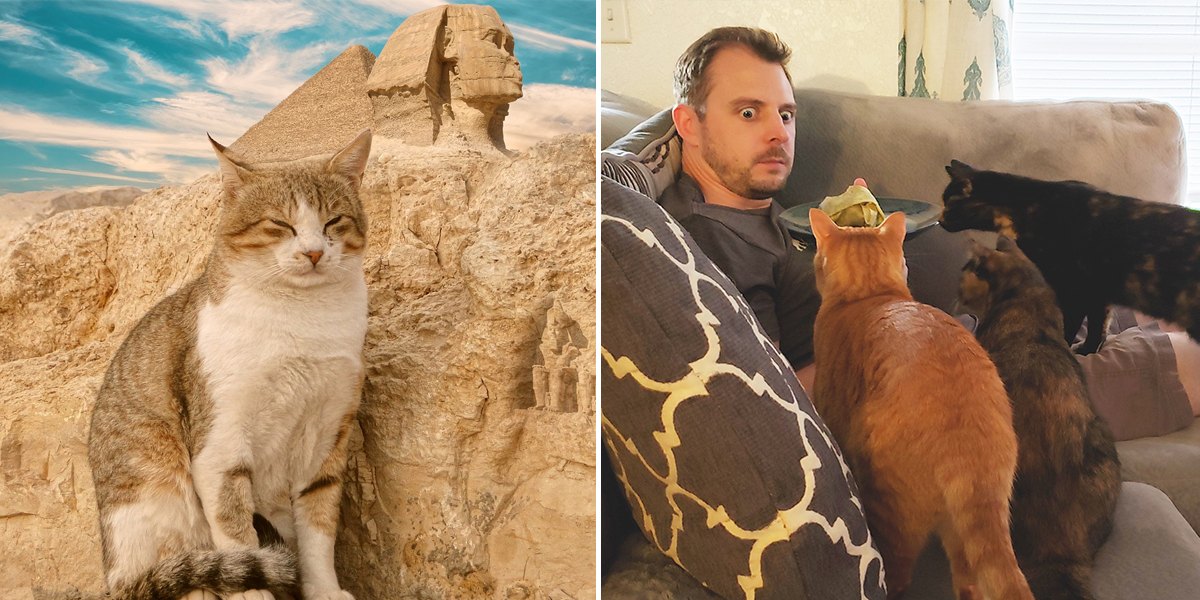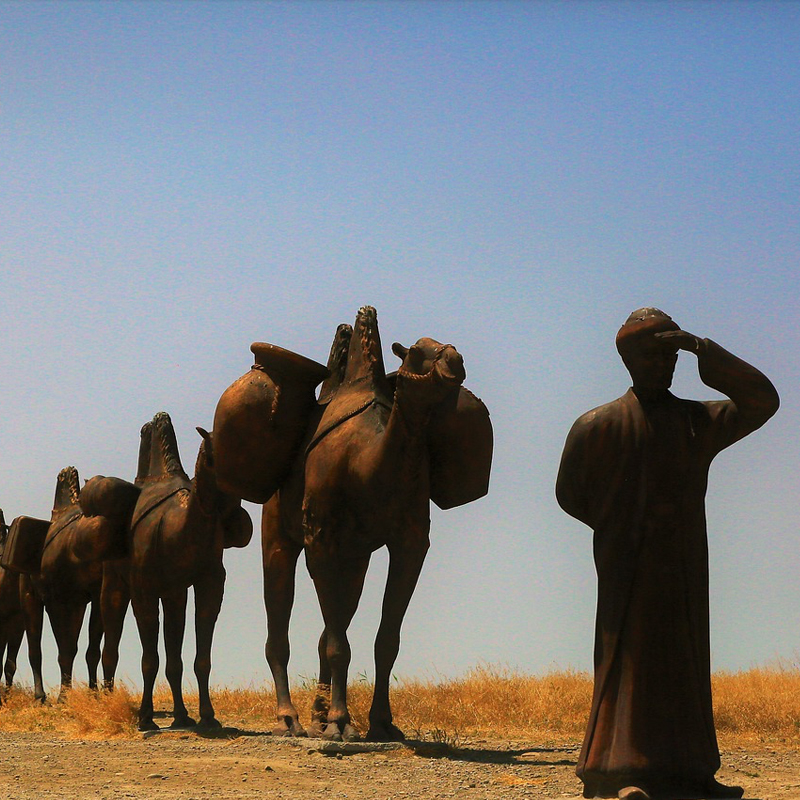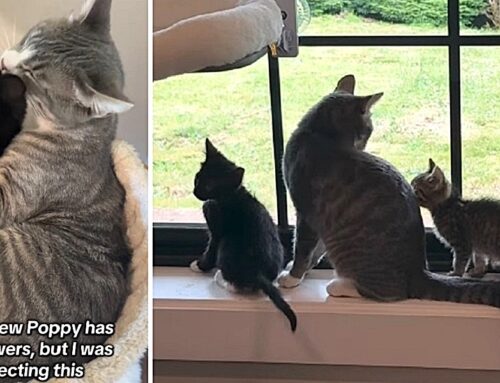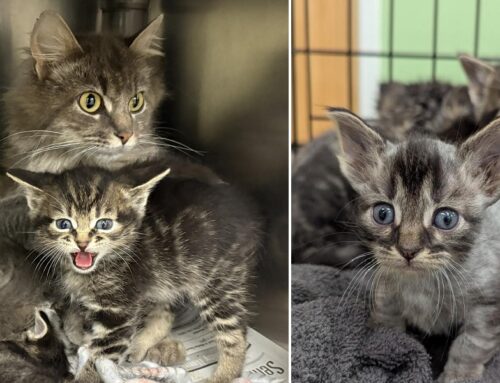When it comes to ancient house cats, you might automatically think of Egypt and the Near East. Indeed, the first domesticated cats may have come from the Middle East’s Fertile Crescent since that’s where the first agricultural societies flourished.
Some 12,000 years ago, people began to settle in one place and tend to crops. Then, ancient cats had a very important role, protecting the crops from pests, just as they do on farms today. Later, in the Far East, prized cats protected precious manuscripts from rodents.
As humans began caring for pets and livestock, everything changed. Quite possibly, ancient cats and dogs played a role in domesticating humans too.
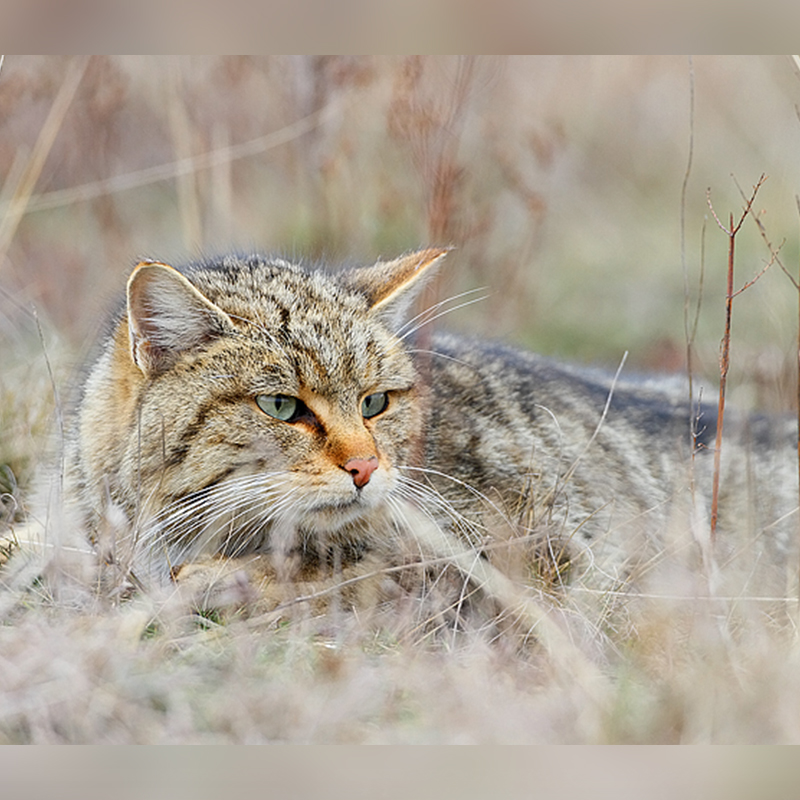
Felis silvestris by Péter Csonka via Wikimedia Commons
Cats Domesticated Themselves?
First, let’s get it straight because we all know people don’t own cats so much as the reverse is true. As the saying goes,” ‘domestic cat’ is an oxymoron.” +
And, that remains an axiom, reaching thousands of years into the ancient past.
“We think what happened is that the cats sort of domesticated themselves,” said Carlos Driscoll, one author of a study into the Near Eastern origin of cat domestication.
Thus, cats just invited themselves in, and over time, the friendlier and more docile cats became most desirable to humans. Otherwise, this is called the “Commensal Pathway” to domestication.
At the same time, scientists have found genetic evidence that early humans domesticated themselves too. Or, did our pets help domesticate us as we began living closely with them?
“Who else lives with furry food thieves/inspectors?! 😯”
Ancient Cats and Dogs Change World Culture
As ancient people began having pets and livestock, they split from the now-extinct Neanderthals some 600,000 years ago. As with our pets, we began favoring docile, peaceful traits in ourselves.
Nevertheless, one scientists stated, “There was active selection, for the very first time, against the bullies and the genes that favored their aggression,” said Harvard anthropologist Richard Wrangham. But so far, “Humans are the only species that have managed this.”
Either that or maybe ancient cats and dogs had a bigger effect on us than we are willing to admit? Most likely, the Ancient Egyptians and Romans would agree. In these early cultures, cats were revered and elevated in stature.
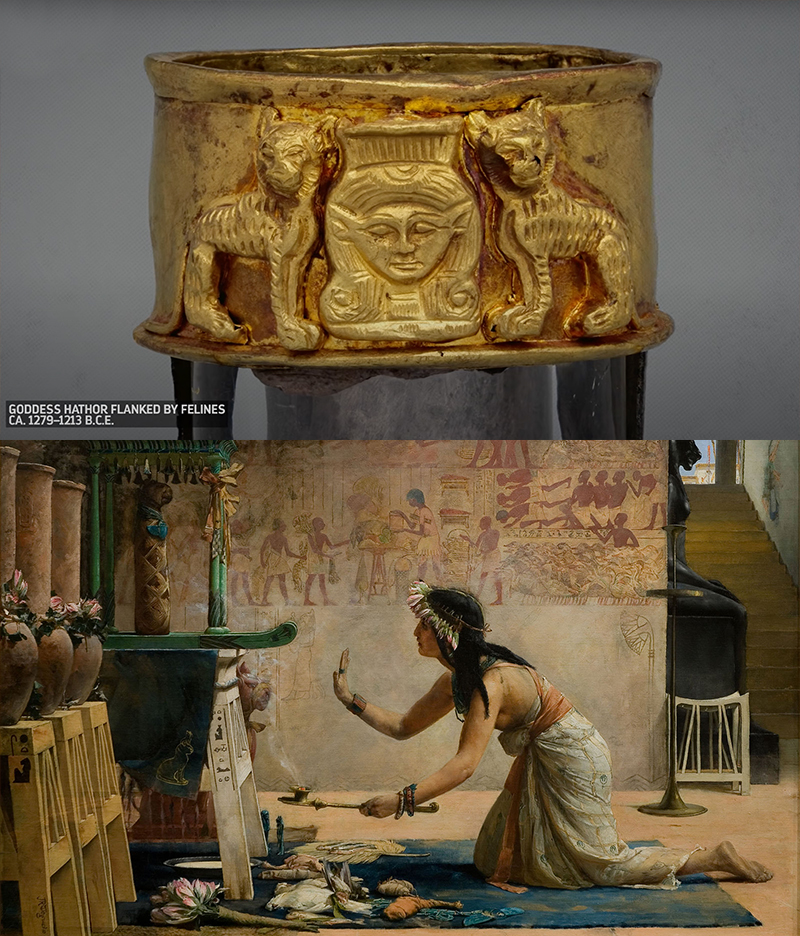
An Egyptian cat symbol with the Egyptian goddess Hathor via YouTube and The Obsequies of an Egyptian Cat by John Reinhard Weguelin via Wikimedia Commons, public domain
For example, those convicted of killing a cat in Egypt could face a death sentence. Meanwhile, the Romans saw cats as a symbol of liberty.

Roman cat mosaic via YouTube/PBS Eons
Cats on the Silk Road
Although we often associate Egypt with ancient cats, there is evidence of pet cats in many other parts of the world. For example, in 2020, scientists reported they found a well-preserved pet tom-cat skeleton in Kazakhstan which lived over a thousand years ago. Nomadic herders had buried the cat, more widely seen with dogs.
“This tom-cat lived into adulthood, was well fed (with a diet that may have contributed to dental complications) and was cared for following bone fractures in the front and back legs, perhaps after a fall,” said Richard Thomas, Professor of Archaeology, at the University of Leicester.
The cat’s burial place was near a famous early trade route.
“Recovered from a city along the Silk Road, this discovery marks an important change in human-animal relations in the steppe, emphasising the important link between pet-keeping and urbanism,” Thomas continued.
From the evidence, it appears the cat was a much-loved companion, not kept merely to hunt mice.
Tests on a nearly-complete cat skeleton — a rare find — discovered on the Silk Road in southern Kazakhstan revealed that cats may have been pets for nomadic herders in the area. https://t.co/c2eNHZEccw
— CNN International (@cnni) July 17, 2020
Ancient Persian Cats
Notably, the earliest historical mention of pet cats dates to the sixth century CE. A medieval Persian document states, “women kept cats as pets, dying their fur, adorning them with jewelry, and letting them sleep in their beds.”
Today, surprisingly little is known about the history of the Persian cat breed, thought to have originated in Persia (modern-day Iran and Turkey). However, these long-haired cats have been companions to humans in Europe since the 1600s.

Silver Persian, winner of multiple leading cat shows in 1902 via Wikimedia Commons, Public Domain with Persian Cat by lkpub via Pixabay, Pixabay License
5,600-Year-Old Cats in China
In northwestern China, ancient cat remains dating 5,600 years ago show traces of millet from human villages. So, the cats ate mice which ate stored millet. In this case, it was a Leopard Cat, Prionailurus bengalensis, not the ancestor of all house cats today, the Western Wildcat.
9,500-Year-Old Cats in Cyprus
Meanwhile, archaeologists found a cat buried with a man on the island of Cyprus dating back 9,500 years. Meaning someone brought the cat to the island 4,000 years before the cats of Egypt.
Video by PBS Eons:
Since the first Middle Eastern wildcat, Felis sylvestris, “cat of the woods,” became curious about humans, we’ve been under their feline spell. Today, cats are the most popular pets, outnumbering dogs by as many as three to one. Online, cats rule the internet and the world, pretty much.
So, you tell us who changed and continues to change who? Did we shape cats or did cats shape us? We have a feeling it’s definitely both but maybe the cats have always had the upper hand?
Below, see Felix sylvestris in action from Wild Films Channel:
Featured image: Cat with Pyramid and Sphinx by ThomasWolter via Pixabay, Pixabay License with Cat Man Chris by Cole and Marmalade


